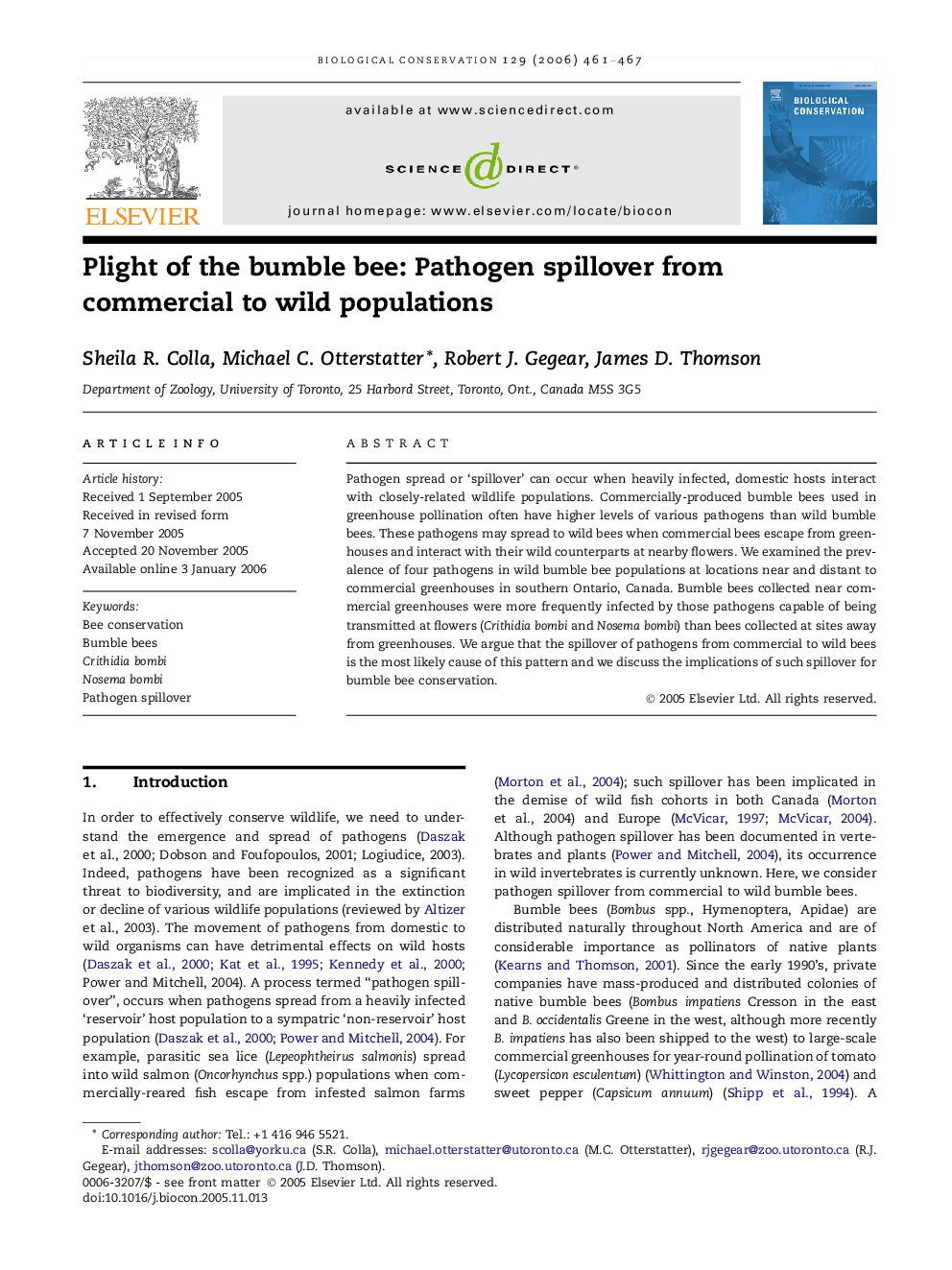| Article ID | Journal | Published Year | Pages | File Type |
|---|---|---|---|---|
| 4387700 | Biological Conservation | 2006 | 7 Pages |
Pathogen spread or ‘spillover’ can occur when heavily infected, domestic hosts interact with closely-related wildlife populations. Commercially-produced bumble bees used in greenhouse pollination often have higher levels of various pathogens than wild bumble bees. These pathogens may spread to wild bees when commercial bees escape from greenhouses and interact with their wild counterparts at nearby flowers. We examined the prevalence of four pathogens in wild bumble bee populations at locations near and distant to commercial greenhouses in southern Ontario, Canada. Bumble bees collected near commercial greenhouses were more frequently infected by those pathogens capable of being transmitted at flowers (Crithidia bombi and Nosema bombi) than bees collected at sites away from greenhouses. We argue that the spillover of pathogens from commercial to wild bees is the most likely cause of this pattern and we discuss the implications of such spillover for bumble bee conservation.
